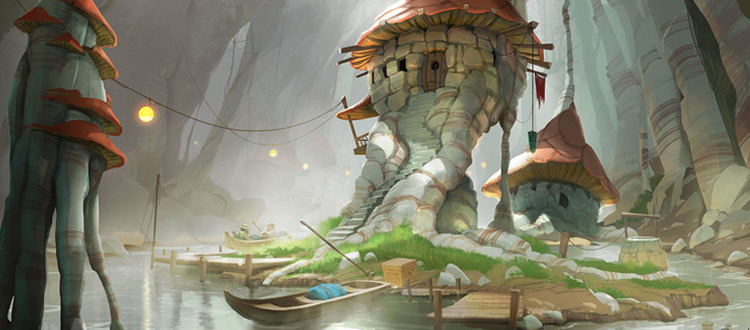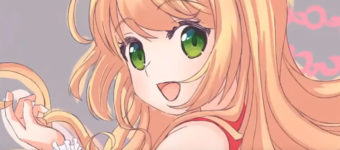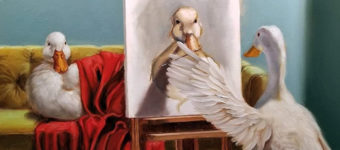
Free Concept Art Tutorials For Beginners & Aspiring Professionals
Concept art requires two basic skills: drawing and imagination.
Good concept art is always grounded in reality, yet still creative, and gives the viewer a clear understanding of how something would look if it were real. This can range from environments to creatures and even more complex characters.
Visualizing entire worlds takes a lot of practice. Concept artists need to think like designers, using their knowledge to create objects and characters that could exist within their fantasy world.
This collection of tutorials will teach you what a concept artist is, how to draw and think like one, along with some great start-to-fnish tutorials on various creative designs. And even a few tutorials on how to break into the industry and land a career as a concept artist.
So You Want To Be A Concept Artist?
To start in this video you’ll learn that concept artists don’t aim to create pretty illustrations.
Emphasizing the importance of drawing speed, this tutorial starts with a time-saving technique. By grabbing a basic 3D model and liquifying it, the artist creates an interesting humanoid shape as the base of the design.
After talking about the industry the artist dives into the nitty-gritty of being a concept artist. This will be useful to newbies who are just starting to look into this path.
Before finishing the character in this tutorial, the artist also gives a few of his favorite tips and tricks for improving your concepts. Number one on the list is isolating elements to see if their designs stand out against the composition.
Character Concept Piece
This intensive tutorial teaches you how to create a character from start to finish. The video is recorded in real-time so if you have two screens to follow along as you watch.
After filling a blank canvas with a neutral grey, the video starts with a silhouette sketch of a knight’s bust using a messy brush. Staying away from dark blacks, the artist slowly adds in details by layering his line work and flipping the canvas regularly.
Then continuing in black and white, he explains the importance of staying grayscale and why it helps maintain your values.
Next is the refining process where using a thin, black brush, the basic shapes are cleaned up and defined.
At the same time, highlights are added using the overlay layer style to draw out exciting angles.
Once the greyscale is complete it’s time to move on to the next tutorial in this set: adding color.
Introduction To Matte Painting
This tutorial starts with a detailed explanation of what matte painting is and how to achieve a realistic look fast.
By combining digital painting, photo textures, 3D model renders, and a whole lot of imagination, you can create impressive landscapes and futuristic cities lightning fast.
For a full 60 minutes this artist shows you how he creates his paintings from start to finish.
He begins by blocking out basic shapes and thinking about the environment he wants to portray. Using a messy brush on a greyscale canvas, he works on larger shapes and composition first by drawing the scenery together.
When the basic composition is set it’s time to add photo textures. You’ll learn how to select photos and adjust values to fit into your concept’s structure. With each layer separated it’s easy to go back and forth until you reach the perfect look.
The tutorial finishes with a few low-key final touches that add realism to the final piece.
Thumbnails To Silhouettes
Concept sketching is a technique you can use to develop your speed and put down ideas faster.
This is a quick crash course in silhouetting, a vital part of any design process.
The artist encourages you to make small silhouettes with no clear character design in mind. These will become the basis of your concept sketching process.
Change your brush size and set your colors to dark grey, and add some lineart details creating compelling characters with costumes and accessories like robotic armor.
These quick sketches can each be done in 5-10 minutes to help your creative juices flow.
If you’re having difficulty letting go of a design or are facing some artist’s block, silhouette concepts banish the blank canvas and give you a clear bouncing board to work from.
Design Cinema – Creature Sketching
The tutorial is led by professional instructor Feng Zhu who works in the industry and manages his own concept art school called FZD School of Design.
He gives you an in-depth analysis of time management as a pro concept artist and highlights the importance of quick idea generation.
Feng begins this video by explaining generational drawing and why he’s sticking to generation 1 for this video. By continuously drawing and erasing over the same linework (without creating a new layer) he keeps the initial energy of the first sketch.
Throughout the narrative he cleans up five different creature designs, teaching you what to look out for and cautioning away from overdrawing in certain areas.
Design Cinema – Fantasy Landscape
When designing landscapes for the game industry you need to think a little differently.
To keep players entertained and engaged the world needs to be believable and true to the creative vision.
This tutorial starts with a brief explanation of how to keep landscapes dramatic yet relevant before launching into the technical details. Feng begins with a loose blocking stage, filling out the compositions and defining shapes of distant snowy mountains.
The key to fantasy landscapes is composition and a sense of depth. Once you finish the rough blocking phase the painting should read well and look good. Detail doesn’t save a landscape from bad composition.
After three different landscapes are blocked in, each mood and design is explained. Feng skips over the detailing process and shows you the final pieces side by side.
By zooming out you see how the detail only changes around 25% of the original thumbnail – emphasizing the importance of the blocking process.
Character Design
Designing a character is a challenging task. But the more you practice the better you get.
Using a concept chart you can save time by removing extraneous overthinking. You just pick a genre, gender, class(weapon or fighting style), and species.
For the sake of this tutorial we have fantasy, crossbow, human, and woman. The artist brings in 4 sketches and starts blocking out dark and light values while paying attention to the costume design.
Next, color is added and two of the sketches are discarded. With the blocking stage complete, you learn how to maximize your time and mirror painted details without the final design looking too ridged.
The entire design process is finished with extra detailing to make each section of the armor stand out. This tutorial is easy to follow and a perfect reference if you want to learn more about character design.
Character Design – Another Approach
This impressive speedpaint is not narrated but still contains a wealth of information.
Done by a French concept artist, it begins at the initial sketching stage and carries you through to the final colorized design.
This focuses on an armored anthropomorphic bear giving you a clear point of reference on how to integrate animal proportions into your character concepts.
Dropship Concept Art
In this video you’ll learn what it takes to design a solid believable vehicle concept.
To begin, the artist shows you his brushes of preference and how to set them up in Photoshop.
Taking you through the initial design process you’ll learn how much preparation goes into mech concepts. The director’s considerations and reference images provide the basis for every aspect in the creative phase.
You’ll also learn how the artist implies a sense of scale and why he starts out with a shadow shape before continuing onto fine line details.
This is artwork for a client so you can tell it’s very detailed. Delivering concpets that looks professional is key to maintaining a paying job in the industry.
You’ll see the start to finish process for three different concepts and how to label them for final delivery. An excellent resource for aspiring freelancers.
Design A Weapon Easily
Now here’s a basic tutorial that is great for beginners struggling to create original designs.
“Your designs suck” is one of the many powerful lessons jammed into this 30-minute tutorial.
Learn to design the basics of a sword using the transform tool in Photoshop. Next incorporate ancient cultural designs to give your weapon an edge(pun intended).
Using the rule of big and small, you’ll be able to create a pleasing design even if your drawing skills aren’t too strong.
To flesh out the design just shade your weapon and bring it into the three-dimensional world.
Finding Perspective In Paintings
Have you ever seen a photograph with exactly the perspective you want? Or maybe another digital painting with fantastic composition you want to use?
This tutorial teaches you how to grab the perspective grid from any image.
First, draw in a few quick lines to help you get your bearings. Then draw a baseline and use the duplicator to create a grid. Repeat the process on all axes and you’ll have a perfect perspective grid.
The tutorial covers a few examples so don’t worry if you are new to perspective in art, you’ll quickly pick up the technique.
Military Vehicle Design
Pro concept artist Darren Bacon teaches his process for designing futuristic military vehicles.
The tutorial jumps right in showing you how Darren sketches the initial shapes, blocking them into a car-like design.
He fills the basic sketch with a painterly shadow brush and uses a square smudge brush to create interesting and unique shapes. He adds detailed linework and continues to jump between value and line brushes for the design.
Throughout this process Darren talks about his sketching philosophy and takes you behind the scenes of professional concept art. He freely traces where necessary and uses warping tools to get the right perspective.
This tutorial is a must-watch if you want to get into the real mechanics of concept art.
You’ll find out what’s important, what you can get away with, and how to make your designs stand out.
Stylized Creature Design
One of the most challenging aspects of creature design is keeping your drawings grounded in the real world while still designing something unique.
In this video by CG Spectrum you learn precisely how creature design works.
All creature design starts with proper reference, and the subject matter for this tutorial is weird and wacky spiders. After collecting a few images it’s time to start sketching thumbnails. The key is to always include the main features of the creature you’re designing.
A spider has lots of eyes, six legs, and pincer-like food grabbers.
Stick to those parameters and you can push your designs as far as you like – the end result will still be recognizable as a spider.
The comprehensive tutorial takes you from references to sketches and linework, to color and then final touch-ups, teaching you the entire creature concept process.
And this is just one demo from CG Spectrum’s many premium courses on concept art. You can read more about their concept art courses in our review.
Content Creation & Concept Design
For this hour-long demo, Blizzard artist David Harrington walks you through his career, toolset, and favorite drawing techniques.
This whole thing starts with his job as a concept artist and how his career developed into 3D sculpting over time. He goes over essential software choices and highlights a few key turning points in the games industry.
During the video he answers viewer questions while painting a concept for a monster house.
This video is a treasure trove of information if you are aiming to become a concept artist or studying concept art professionally.
Sunflower Street by Frank Hong
In just under 3 hours, a basic landscape thumbnail is taken from blocky shapes to a realistic concept. The video is sped up double time and commentated by Frank and a fellow artist.
You’ll learn how to pull shapes out from a silhouette and design buildings while keeping a moody atmosphere intact.
The final piece is incredibly detailed and hand painted with impressive speed.
Through the commentary Frank teaches you his techniques, introducing lighting and maintaining values while adding in more detail that fits with his style.
Thumbnail Concept Design For Landscapes
Continually coming up with new landscape ideas is both difficult and exhausting. Yet that’s the job of a concept artist!
If you’re suffering from a bit of design fatigue, the techniques shown in this tutorial will get you going again.
Dividing his canvas up into blocks of color and using reference as the basis for his environments, this artist demonstrates how you can create original landscape thumbnails almost effortlessly.
You get insight into mood thumbnailing and you’ll see which tools the artist uses and why. The key to these thumbnails is value and color, all of which can be compounded if you practice color studies on your own.
The Old North Landscape
This is a video timelapse with no commentary which shows you how to paint a snowy landscape concept with a twist.
Using a muted color palette, this artist shows you just how many brushstrokes go into a finished piece.
Starting with a loose value sketch he quickly moves to detailing and draws out shapes of a giant castle. Without guidance this may be tough to follow but you can still pick up some great ideas along the way.
Studying & Breaking Into The Industry
Getting a fulltime paying job is the final goal of many aspiring artists.
But unfortunately, it’s not a point A to point B journey.
In this walkthrough, the artist talks about how he broke into concept art and where most students fail when trying to get a job.
A good concept artist is first and foremost a good artist. Concept art isn’t one skill but rather a combination of skills that are combined and used for the end goal of imagining creative ideas visually.
Focus is the key to improving and getting a job, but at the same time, focus shouldn’t blind you from other things.
Watch this tutorial if you feel confused about your personal career, school choices, or artistic direction. You’ll come away feeling more sure of yourself after a few ‘aha!’ moments.
Full Concept Art Playlist
Lastly we come to a large playlist that’s packed full of technical tutorials on drawing, painting, and creating characters.
From painting skin tones to getting into the concept art industry with a great portfolio, you can choose from a ton of high-quality tutorials all focused towards concept art.
An excellent playlist to bookmark for future reference to work through slowly at your own pace.












